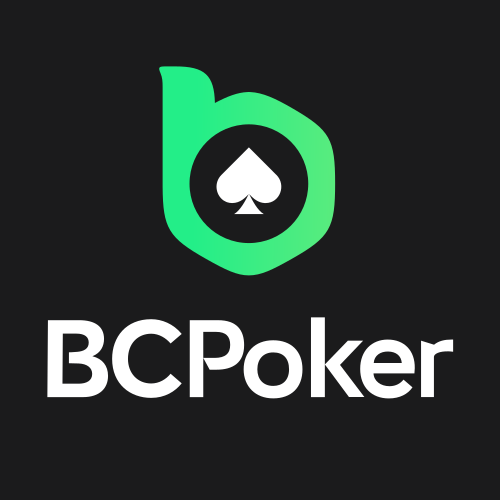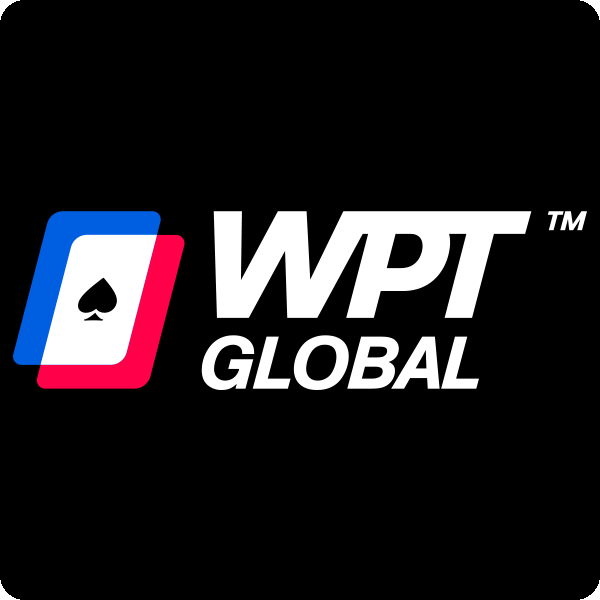Texas Holdem vs Omaha: Which Poker Game Makes More Money? [2025]
Pot Limit Omaha and Texas Hold ‘em create different profit opportunities for poker players. Texas Holdem vs Pot Limit Omaha represent the two dominant poker variants globally. Hold’em controls tournament formats like the World Series of Poker. Omaha has gained significant traction over recent years and is catching up quickly.
These games present distinct strategic requirements. Hold’em players use any combination of their two hole cards. Omaha is different, as it enforces a strict rule: exactly two of the four hole cards must be used.
Find the best PLO action and rakeback deals here:
BCPoker NEW
Get $5 FREE (only with App Registration)
$200 First Deposit Bonus
Incredibly Soft Action
WPT Global
Free Tournament tickets up to $480
Free Casino Coin up to $100
30% Rakeback
Network: Independent
Phenom Poker
up to 35% Rakeback
Soft Action
Network: Independent
Juicy Stakes Poker
36% Rakeback
Spin & Gos with up to 12,000x your Buy-in
Network: Horizon Poker
Champion Poker
Network: iPoker
Gameplay Mechanics and Rules
Texas Holdem vs Omaha share identical betting structures. Both games differ fundamentally in card distribution and usage rules. These differences create distinct strategic approaches and profit opportunities.
Hole Cards: 2 in Hold’em vs 4 in Pot Limit Omaha
Hold’em deals two private cards to each player. Omaha provides four hole cards per participant. This difference transforms hand possibilities completely. To give you an overview, here is the overview of starting hand combinations:
- Texas Hold’em: 1,326 total starting hand combinations
- Pot Limit Omaha: 270,725 starting hand combinations
Fixed vs Flexible Card Usage: Omaha vs Holdem
Hold’em allows flexible card usage. Players can use both hole cards, one card, or none. “Playing the board” remains a valid option when community cards form the best hand.
Omaha enforces strict card usage rules. Players must use exactly two hole cards plus three community cards. No exceptions exist regardless of board strength.
This rule prevents players from using three or four-hole cards. It also eliminates playing the board completely.
Betting Rounds: Similar Structure, Different Dynamics
Both games feature four betting rounds: pre-flop, flop, turn, and river. Showdowns occur identically in both variants.
Betting dynamics differ significantly between games. Hold’em promotes measured, strategic play. Omaha generates aggressive action due to increased hand combinations.
Most Omaha games use “pot-limit” betting. Maximum bets equal the current pot size. This structure differs from no-limit Hold’em’s unlimited betting ranges.
Pot-limit betting creates different strategic considerations. Bluffing becomes less effective. Value betting requires stronger hands.
If you want to dive deeper into Pot Limit Omaha rules, check out the best PLO training site PLO Mastermind:

Pot Size Trends: No-Limit vs Pot-Limit
No-Limit Hold’em allows unlimited betting amounts. Players can bet their entire stack anytime. Pot Limit Omaha rules restricts maximum bets to current pot size. This limitation reduces bluffing effectiveness.
Hold’em pots escalate quickly pre-flop through aggressive betting. Omaha pots grow steadily across multiple betting rounds. The pot-limit structure creates more calculated aggression.
Winning Hand Strength: Top Pair vs The Nuts
Hold’em winners often hold:
- Top pair with good kicker
- Overpairs to the board
- Two pair combinations
Omaha often demands stronger holdings at showdown:
- The nuts or near-nuts frequently required
- Small flushes become vulnerable
- Drawing hands often favor made hands
Variance and Risk: Omaha vs Holdem
Texas Hold’em provides lower variance with predictable outcomes. Smaller bankroll requirements support steady play.
Omaha creates higher variance and dramatic swings. Conservative bankroll management becomes essential. Players need larger reserves for inevitable downturns.
Bankroll recommendations:
- Hold’em: 30-50 buy-ins
- Omaha: 100-150 buy-ins
Cash Game vs Tournament Winnings
Tournament structures offer different profit potential. Payouts reach 100+ times buy-in amounts. Good players only cash 20% of tournaments on average.
Cash games provide steadier results:
- Skilled players win 50-60% of sessions
- Smaller individual payouts
- More consistent hourly rates
Skill Requirements and Learning Curve
Omaha and Holdem demand different skill sets. Each game requires unique mental approaches and technical abilities.

Omaha vs Holdem: 270,725 vs 1,326 Starting Hand Possibilities
Hold’em hand reading focuses on 1,326 starting hand combinations. Omaha presents 270,725 possible starting hands, making opponent analysis exponentially harder. Four hole cards provide more self-information but complicate range assessment.
Equity Calculations: Difference between Omaha and Holdem
Texas Hold’em relies on basic pot odds and outs counting. Omaha demands advanced mathematical understanding and rigorous equity calculations. The “Rule of 2 and 4” applies to both games: multiply outs by four after the flop or two after the turn.
Bluffing: Effective vs Limited Strategy
Bluffing works better in Hold’em than Omaha. Seasoned players recognize bluffing as less valuable in Omaha. Omaha players call more frequently with weaker hands due to higher improvement probability.
High-stakes Omaha players bluff 6-12% of the time. Low-stakes players might bluff less than 5%.
Player Base and Game Availability
Player distribution affects earning potential across both poker variants. Game accessibility directly impacts your profit opportunities. Check out the best Pot Limit Omaha games:
BCPoker NEW
Get $5 FREE (only with App Registration)
$200 First Deposit Bonus
Incredibly Soft Action
WPT Global
Free Tournament tickets up to $480
Free Casino Coin up to $100
30% Rakeback
Network: Independent
Phenom Poker
up to 35% Rakeback
Soft Action
Network: Independent
Juicy Stakes Poker
36% Rakeback
Spin & Gos with up to 12,000x your Buy-in
Network: Horizon Poker
Champion Poker
Network: iPoker
PLO Tournament Growth
Omaha tournaments have shown substantial growth over the last years. More and more Texas Hold’em players are shifting to the beautiful game of Pot Limit Omaha. The WSOP, WPT and Triton Events feature multiple Omaha events with massive prize pools – and they are getting bigger every year:
- Michael Wang won $1,4 million in the WSOP $10,000 PLO Championship in 2025
- German Dennis Weiss secured a $2,3 million payout at the $25,000 High Roller Event
- Dutch Pro Tom Vogelsang Claims Victory in Thrilling PLO Grand Slam Battle
- Find more Pot Limit Omaha news here.
Comparison Table
Key differences between Texas Hold’em and Omaha affect your earning potential directly. This breakdown clarifies the strategic and financial distinctions.
| Aspect | Texas Hold’em | Omaha |
|---|---|---|
| Basic Game Structure | ||
| Number of Hole Cards | 2 cards | 4 cards |
| Card Usage Rule | Can use 0-2 hole cards | Must use exactly 2 hole cards |
| Common Betting Format | No-Limit | Pot-Limit |
| Hand Strength | ||
| Typical Winning Hands | Top pair or overpairs often win | Requires stronger hands, frequently “the nuts” |
| Hand Combinations | 1,326 starting hand combinations | 270,725 starting hand combinations |
| Financial Aspects | ||
| Variance Level | Lower variance, more predictable | Higher variance, significant swings |
| Recommended Bankroll | 20 buy-ins | 100-150 buy-ins |
| Bluffing Effectiveness | More effective, common strategy | Less effective (6-12% at high stakes) |
| Game Format Dominance | ||
| Tournament Presence | Dominant in tournaments | Growing in tournaments |
| Cash Game Presence | Common | Thrives primarily in cash games |
| Player Base | ||
| Player Pool | Larger player base, many recreational players | More experienced players |
| Game Availability | Widely available, most popular variant | Less common, but growing in popularity |
| Online Traffic | Majority of poker traffic | 50-70% of active tables on some platforms |
Conclusion
Omaha vs Holdem create different paths to poker profitability. Your success depends on matching skills to the right format. Hole card differences drive all strategic decisions. Holdem uses two cards. Omaha requires exactly two from four cards. This fundamental rule shapes everything else.
Earning potential varies significantly between formats. No-Limit Hold ‘em allows explosive pot growth through aggressive play. Pot Limit Omaha generates larger average pots but demands premium hands. Variance separates these games dramatically. Holdem provides stable results for skilled players. Omaha creates wild bankroll swings even for experts. Professional PLO players need 5-7 times larger bankrolls.
Skill requirements differ completely. Holdem rewards hand-reading abilities and psychological warfare. Omaha demands mathematical thinking and disciplined hand selection. Bluffing works poorly in PLO.
Player pools affect your profits directly. Holdem attracts recreational players, especially in tournaments. Omaha draws experienced players seeking additional challenges.
Your temperament determines which game suits you better. High variance tolerance and mathematical skills favor Omaha cash games. Psychological reads and tournament adaptability favor Holdem.
Find the best PLO action and rakeback deals here:
BCPoker NEW
Get $5 FREE (only with App Registration)
$200 First Deposit Bonus
Incredibly Soft Action
WPT Global
Free Tournament tickets up to $480
Free Casino Coin up to $100
30% Rakeback
Network: Independent
Phenom Poker
up to 35% Rakeback
Soft Action
Network: Independent
Juicy Stakes Poker
36% Rakeback
Spin & Gos with up to 12,000x your Buy-in
Network: Horizon Poker
Champion Poker
Network: iPoker
Key Takeaways
Understanding the fundamental differences between Texas Hold’em and Omaha can help you choose the most profitable poker variant for your skill set and bankroll.
• Texas Holdem offers lower variance and steadier profits – Requires only 30-50 buy-ins bankroll vs Omaha’s 100-150 buy-ins due to more predictable outcomes
• Omaha generates larger average pots but demands stronger hands – Players often need “the nuts” to win big, while Hold’em top pairs often suffice
• Bluffing works better in Hold’em than Omaha – Texas Hold’em allows more psychological warfare, while Omaha players call more frequently with drawing hands
• Texas Hold’em dominates tournaments, Omaha thrives in cash games – Choose Hold’em for tournament play and Omaha for high-action cash game profits
• Player pools differ significantly between variants – The 2-card variant attracts more recreational players creating softer games, while Omaha draws experienced players seeking complexity
The most profitable approach isn’t choosing one game over the other, but developing skills in both variants to capitalize on the best available opportunities. Your success ultimately depends on matching your mathematical abilities, risk tolerance, and bankroll size to the right game format.

FAQs
Texas Hold’em generally provides more stable profits due to its lower variance compared to Omaha. Hold’em players can often manage with a smaller bankroll of around 30-50 buy-ins, while Omaha players need 100-150 buy-ins to withstand the game’s higher volatility.
Omaha appeals to players seeking more excitement and strategic depth. With four hole cards, it offers more potential hand combinations, larger average pots, and requires stronger hands to win. This complexity attracts experienced players looking for a greater challenge.
Bluffing is generally more effective in Texas Hold’em, where psychological warfare plays a bigger role. In Omaha, bluffing is less successful because players are more likely to call bets with drawing hands, given the increased possibilities for improvement.
Texas Hold’em dominates the tournament scene, being the primary format for major events like the World Series of Poker. While Omaha tournaments are growing in popularity, Hold’em remains the go-to choice for most poker tournaments worldwide.
Texas Hold’em attracts a larger and more diverse player base, including many recreational players, which can create softer games. Omaha tends to draw more experienced players seeking additional complexity, resulting in a generally tougher but smaller player pool.







